Basically I was paid to follow a set travel route and to take pictures and note down any difficulties in using the transport system to get to the tourist spots.
Kure is about 31 minutes by train southeast of Hiroshima and is famous for its naval past in Imperial Japan.
The Japan Maritime Self-Defence Force Kure Museum with the giant submarine in the entrance.
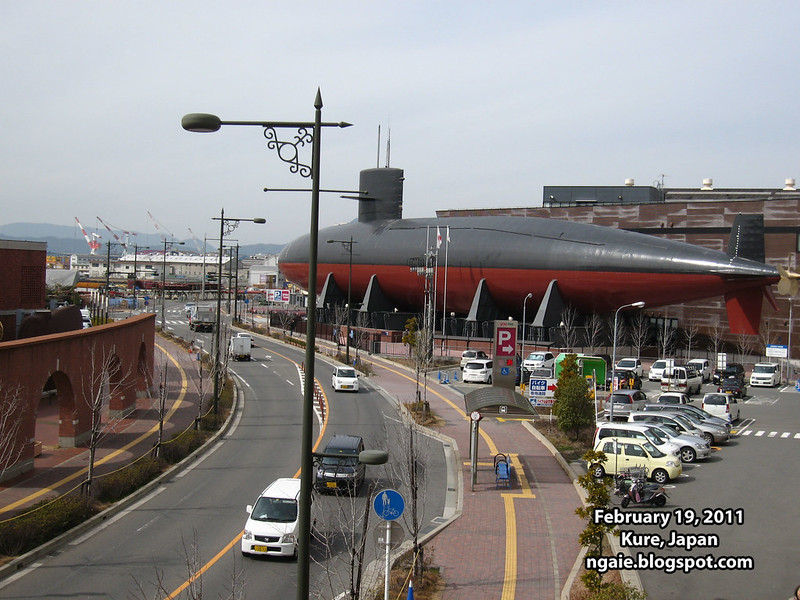
Instead of taking a train directly from Hiroshima, the consulting company's itinerary told us to take a ferry to the island of Etajima first and then to take another ferry from Etajima to Kure.
View Kure in a larger map
Departure from the Hiroshima Ferry Terminal. It is also worth nothing that the ferry terminal was located in an out of the way location.
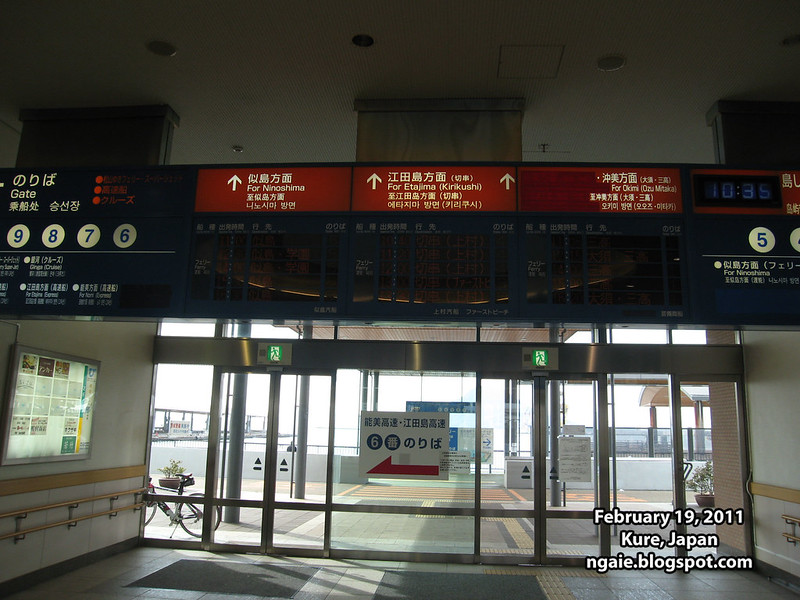
From here, you can also take ferries to Matsuyama on Shikoku, one of the main islands of Japan.

The ticket vending machine. Only in Japanese, this was one of the things I noted in my report.
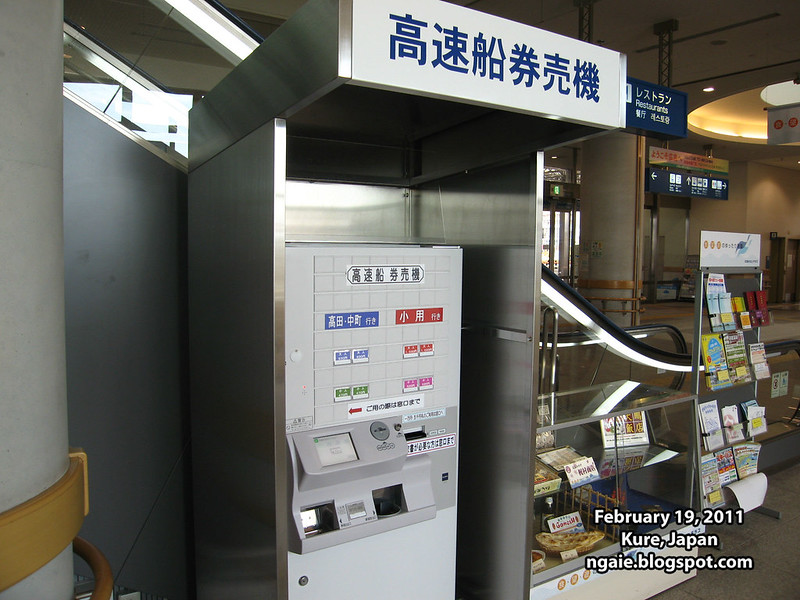
The ferry that I took.
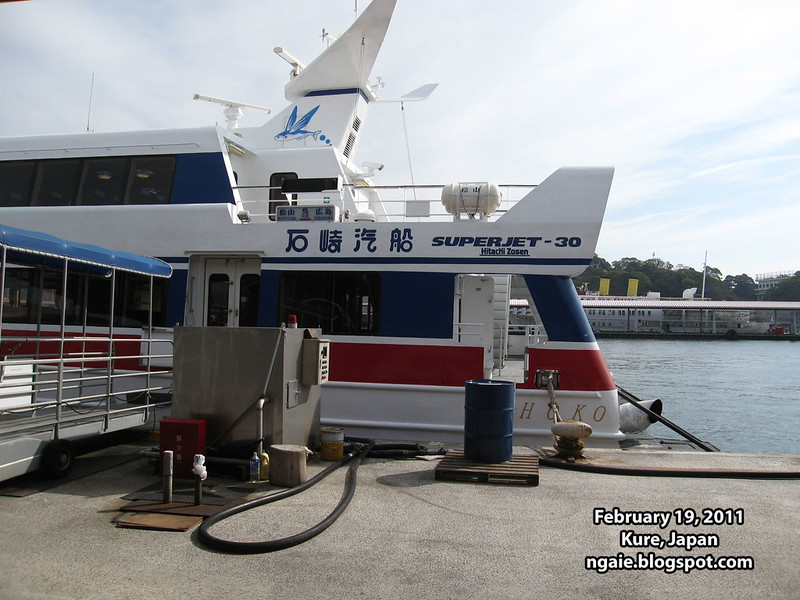
The Seto Inland Sea which is surrounded by mountains.

Another ferry that goes somewhere...
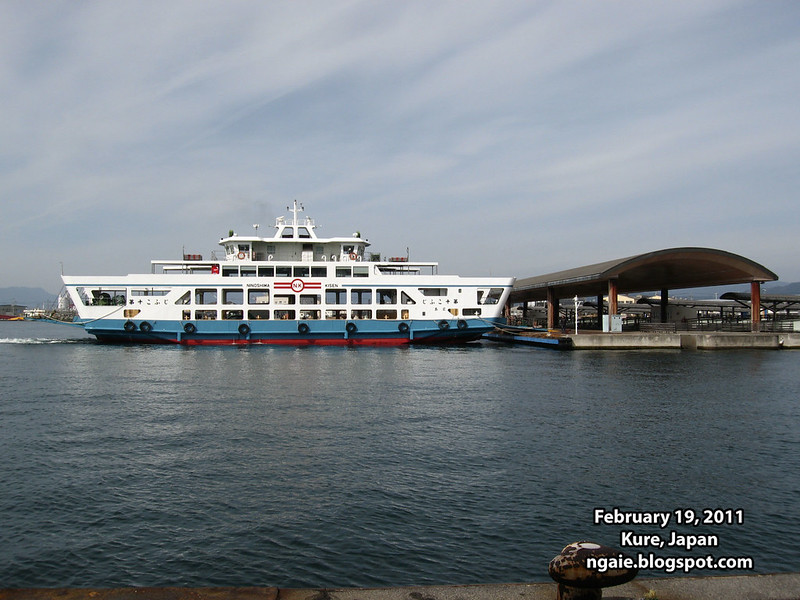
Arrival on the island of Etajima. The reason why we went here was that tourists were thought to be interested in the former Imperial Japanese Naval Academy located on the island. Because this survey was primarily about surveying transport facilities, we were told not to go there was there would not be enough time to finish the survey.
If you actually wanted to go, you would need to take a non-frequent public bus to the site.
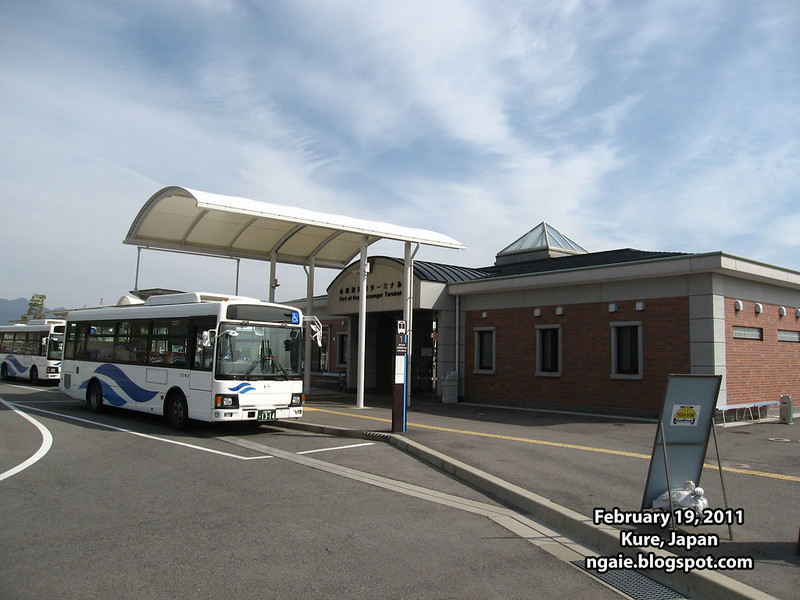
The area felt kind of deserted...
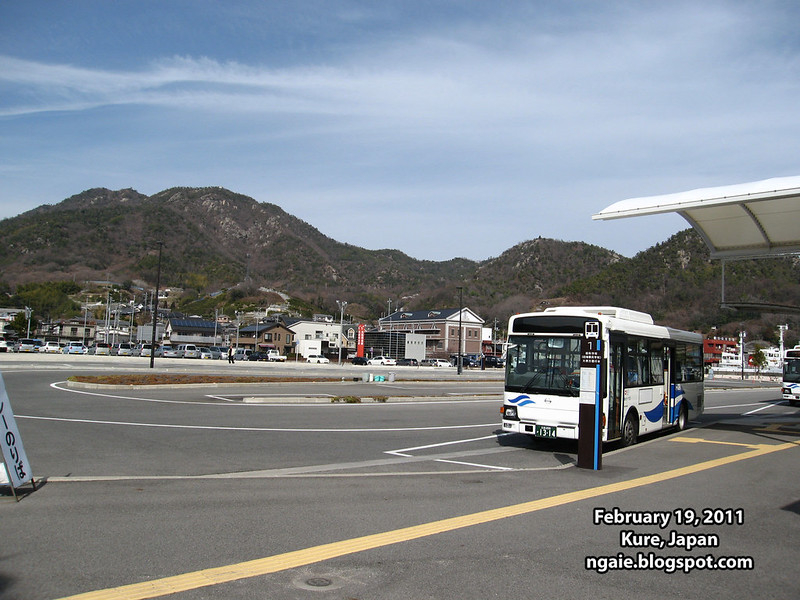
After missing the next available ferry, I had to wait for about 30-40 minutes for the next ferry to Kure. Thank goodness for smartphones and 3G for helping me kill the time.

Inside the ferry, it had a weird seating arrangement and an odd colour scheme.


The view from the deck of the ferry.
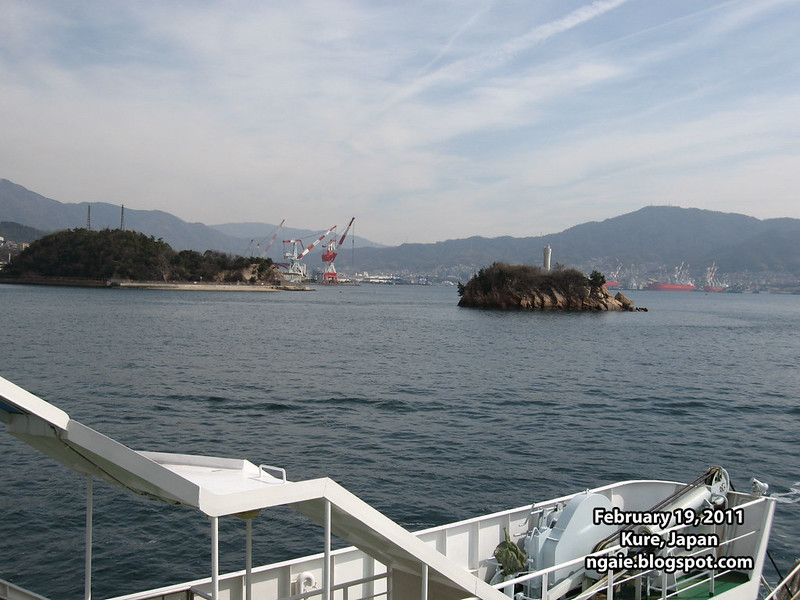

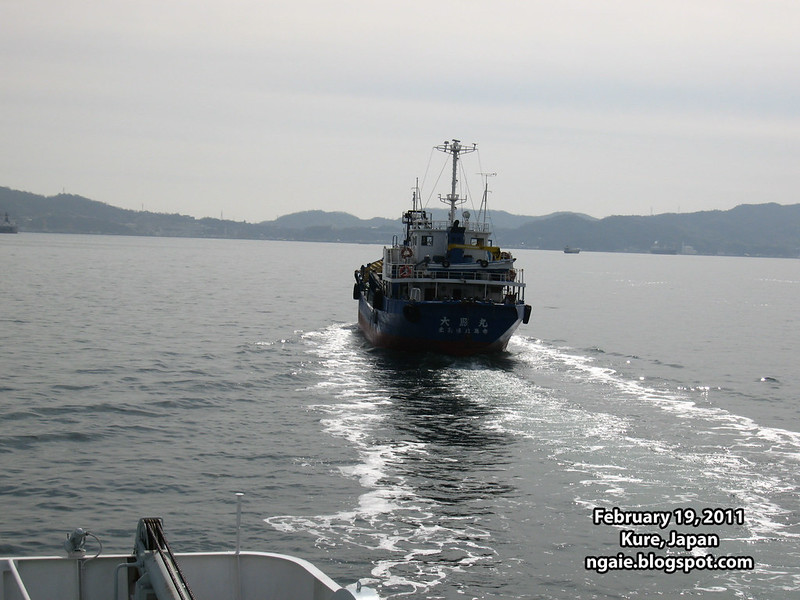
The area is heavily industrialized, probably because of its pre-war past as a major centre of naval activity.
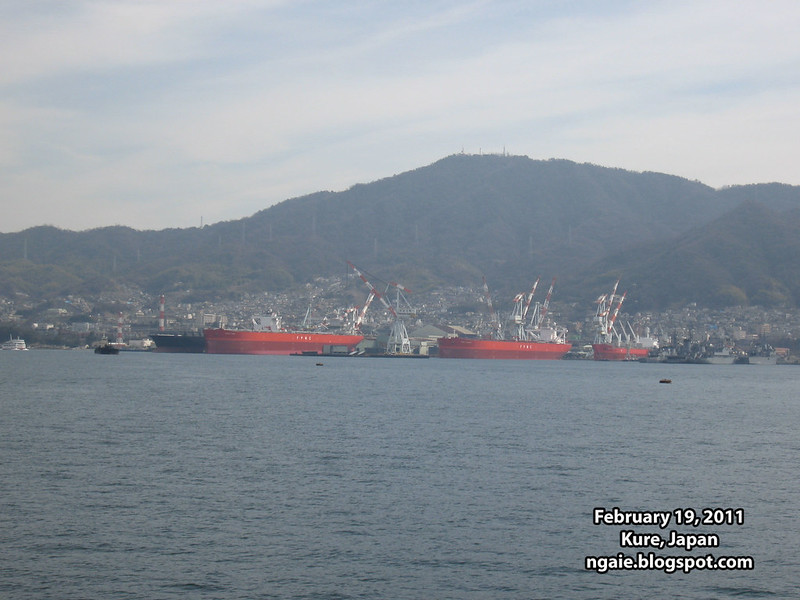
Here the structure of a bridge is being constructed.
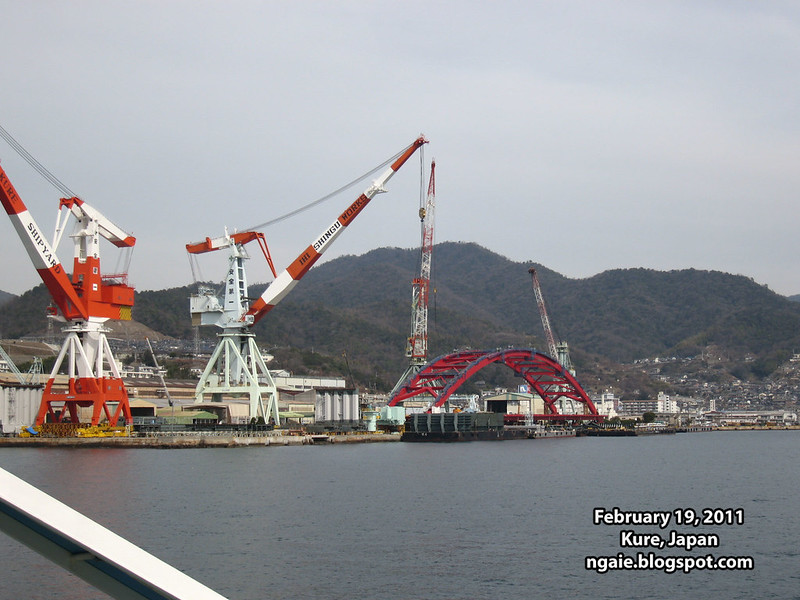
Giant shipyards.


Approaching the city of Kure. The pink "you me town" sign stands out from the skyline. It is a big-box chain store ubiquitous in the Hiroshima area.

The main railway station was close to the ferry terminal. I had to get on a tourist "loop bus" to get to the tourist attractions as specified in the survey route.

I waited a long time because the bus only ran every 20 minutes and of course everyone knows that bus schedules are never accurate.
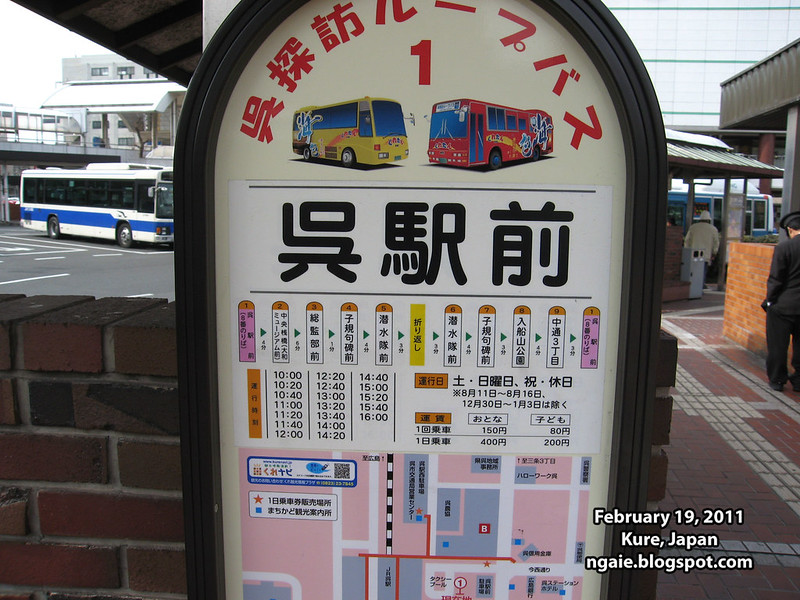
One of the first tourist attractions of Kure was the "history course" where you can see the site where the Battleship Yamato was built (one of the "heaviest and most powerfully armed battleships ever constructed" during World War II by the Imperial Japanese Navy).

The site where the Yamato was built. Now an IHI Heavy Industries shipyard.
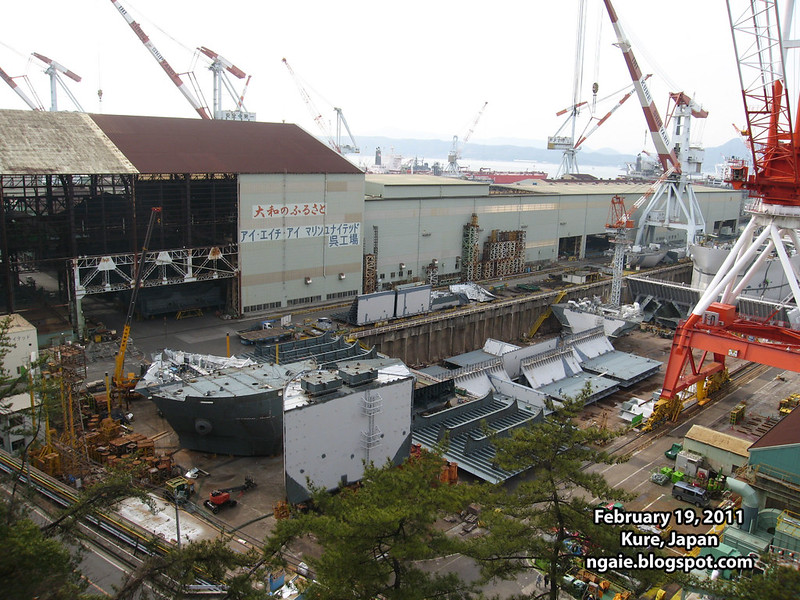
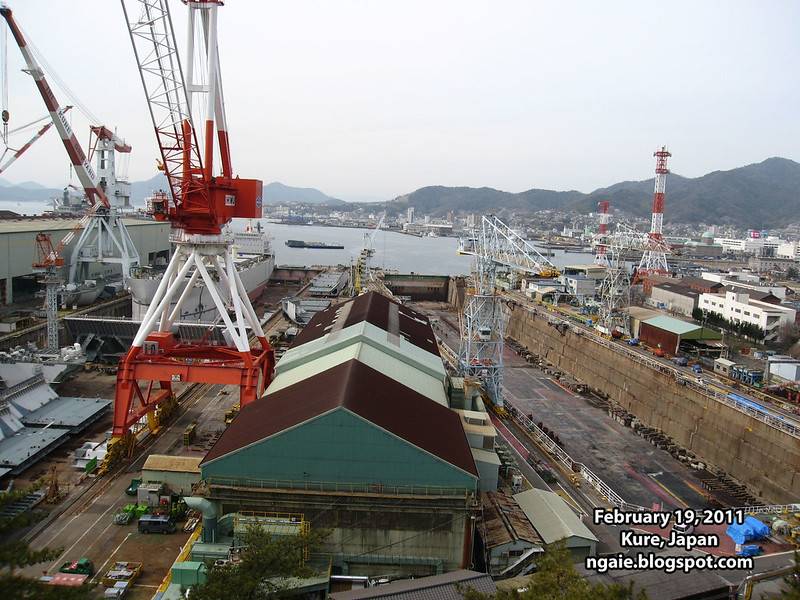
The next stop was the "hill where you can see history", which was basically a concrete covered hillside full of decaying monuments.

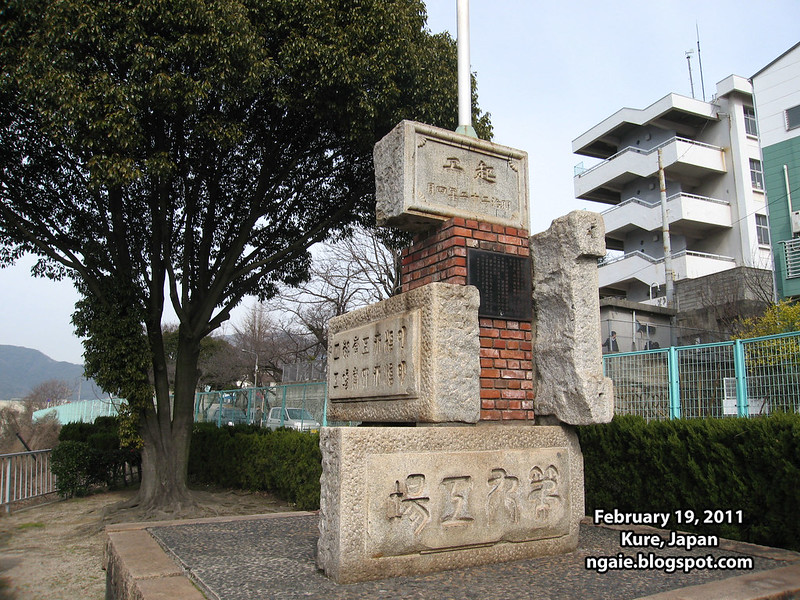
After that, I went to the promenade where you could see military ships and one of the submarine fleets of Japan. The only other submarine base of Japan is in Yokosuka near Yokohama in east Japan.
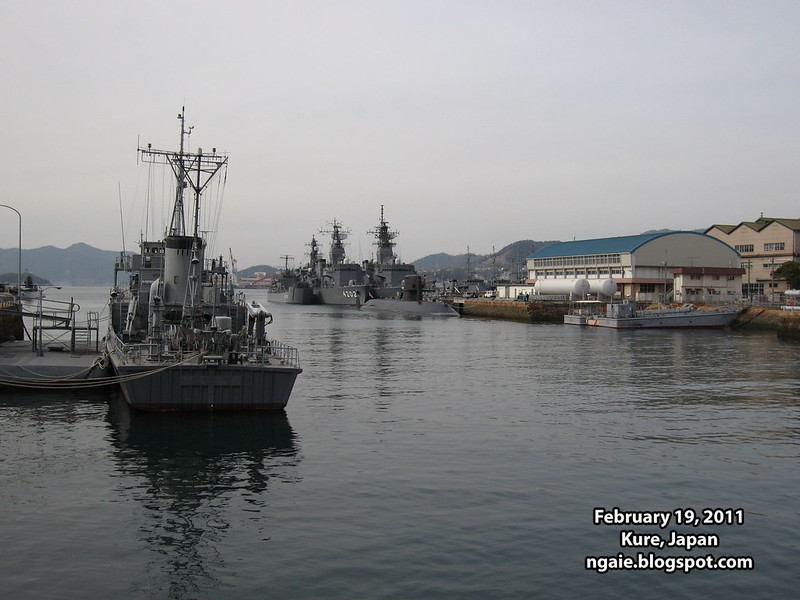
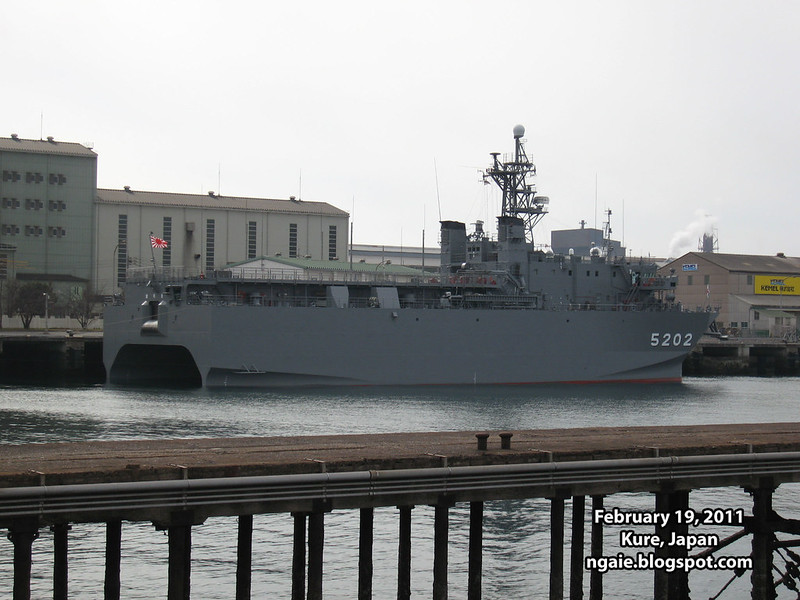
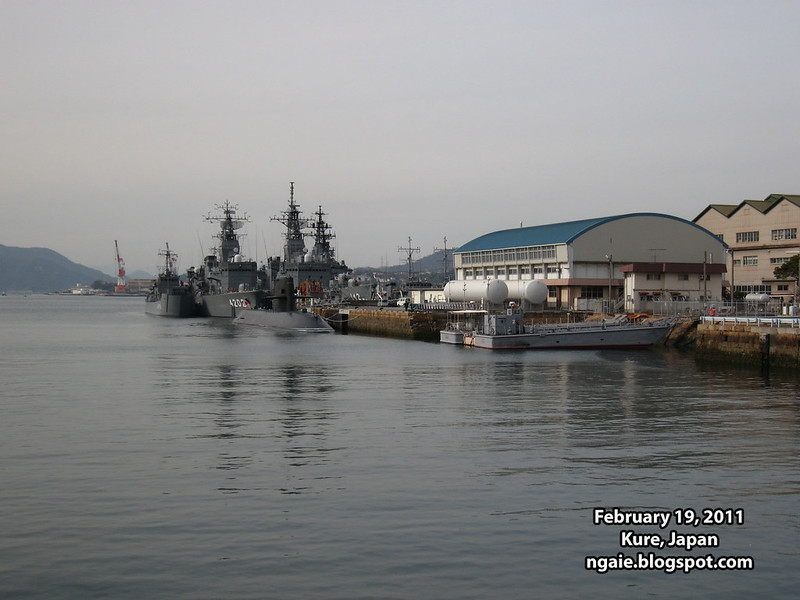
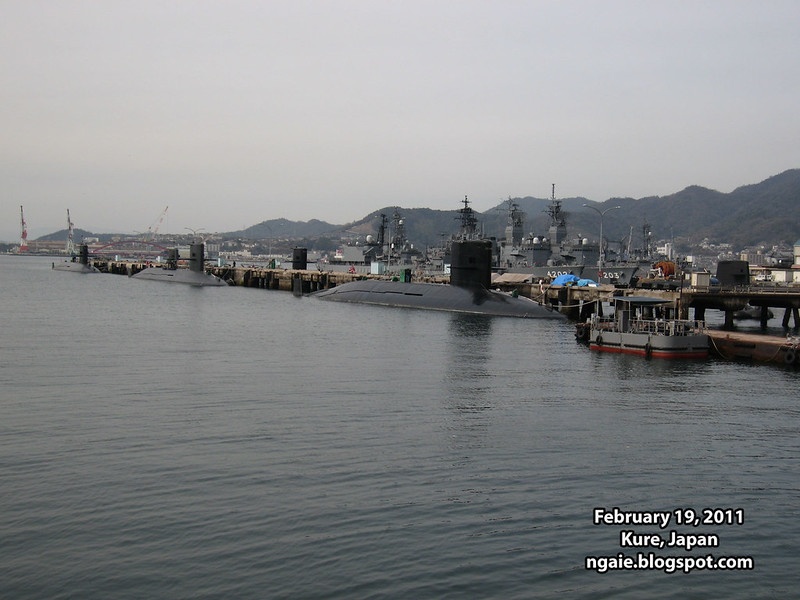

The area was full of military facilities.
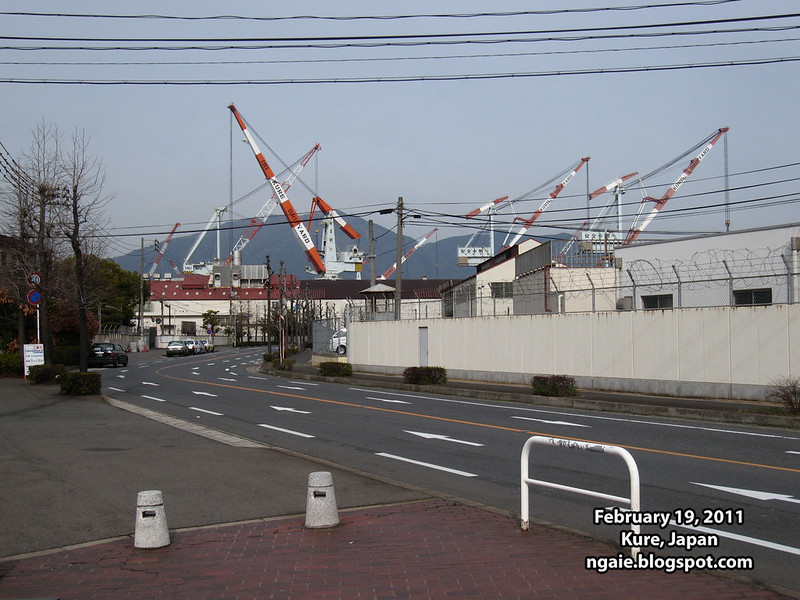
Wherever there is a Japan Self-Defence Force facilities, there is always a U.S. military facility nearby. We know who is really in control of the security situation in Japan...

Afterwards, I headed back to the city centre of Kure to visit the Battleship Yamato Museum was specified in our survey route. I found that the museum's content was fairly neutral unlike the war museum near Yasukuni Shrine in Tokyo where you are not allowed to take pictures inside for obvious reasons.
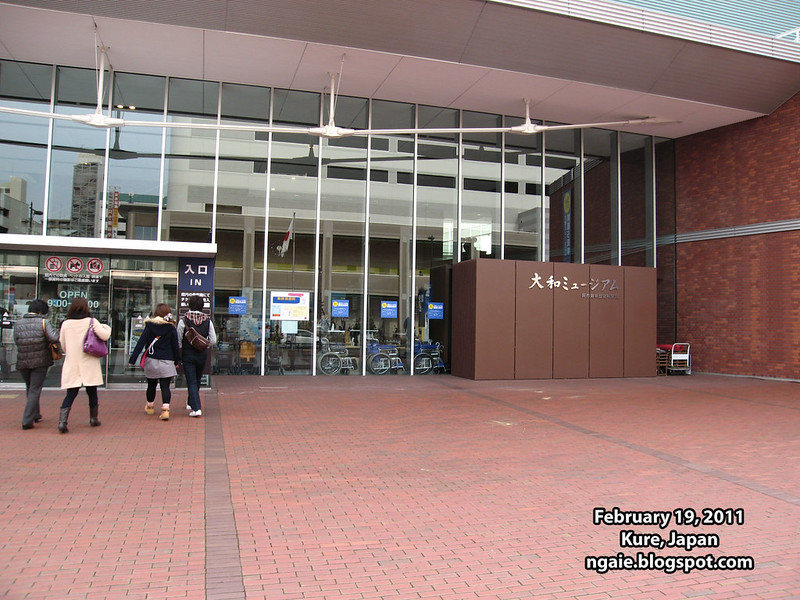
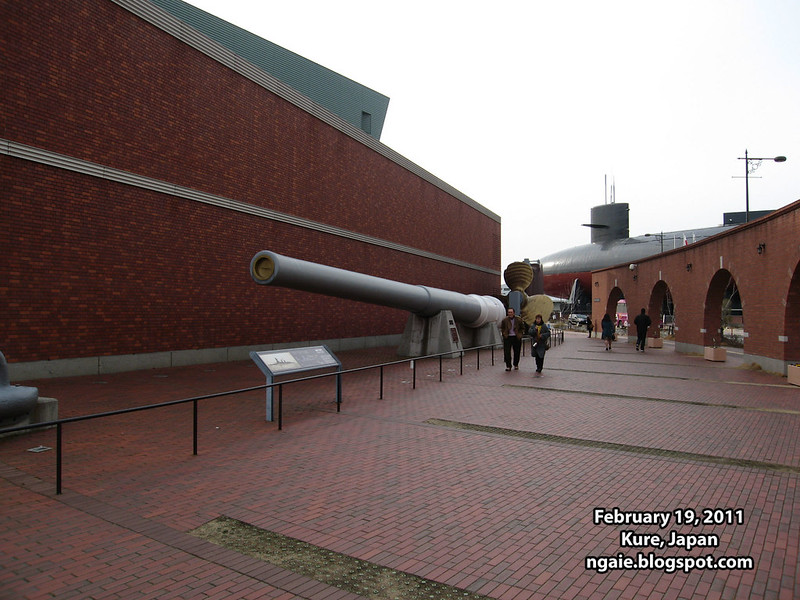
The Mitsubishi Zero aircraft on display.

A decommissioned submarine.

The most impressive thing was a scaled model of the Battleship Yamato. The Japanese in particular love building scale models of almost everything.

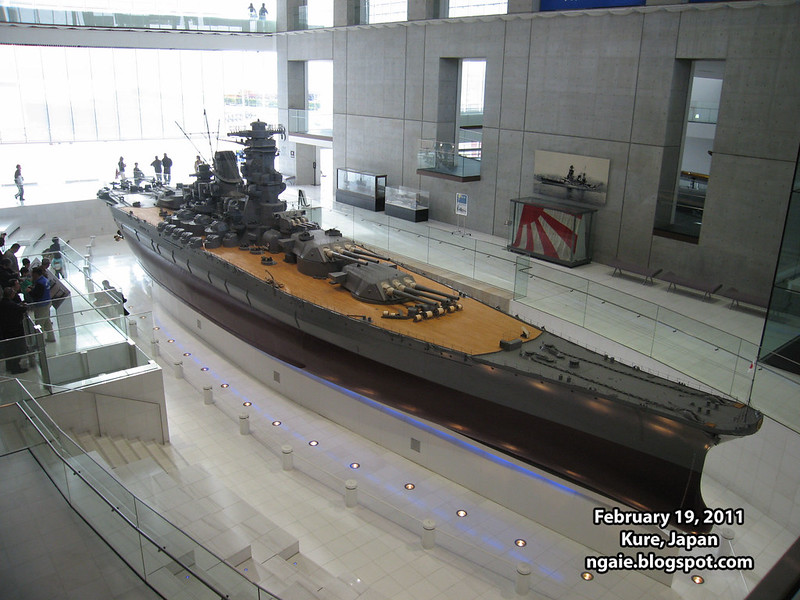
The last stop was the Japan Marine Self-Defence Force Kure Museum where a decommissioned submarine from the late 80s, the Akishio was displayed.


The entrance to the museum was through the decommissioned submarine.
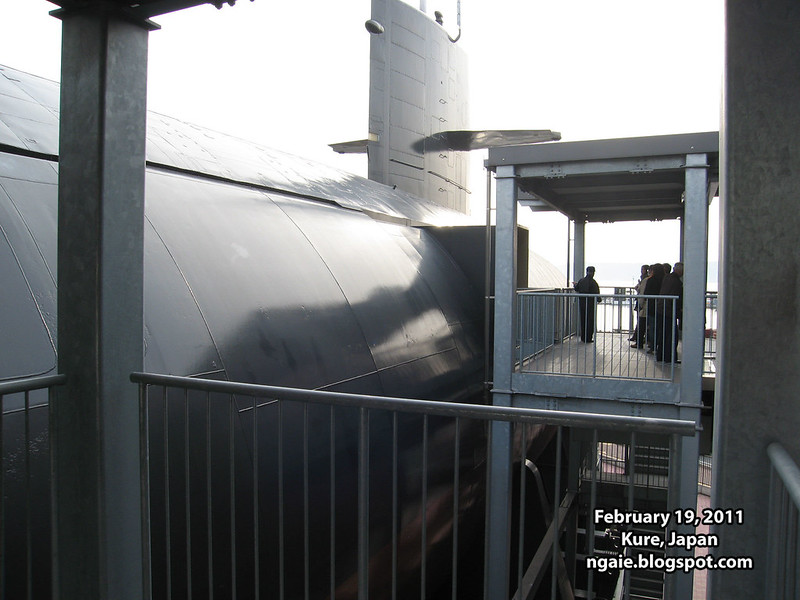


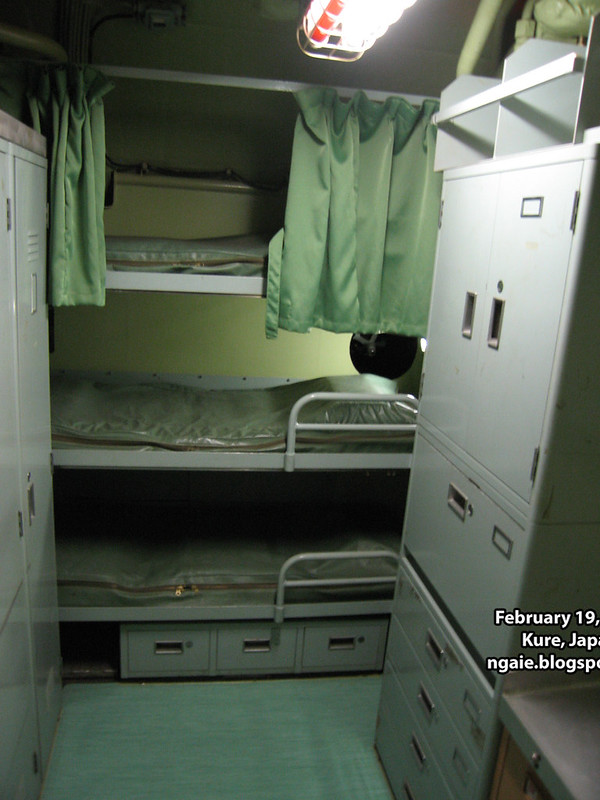
Walking through the streets of Kure on the way back. Interestingly I saw a yatai, a road side food vendor. You don't really see these outside of Fukuoka I think.

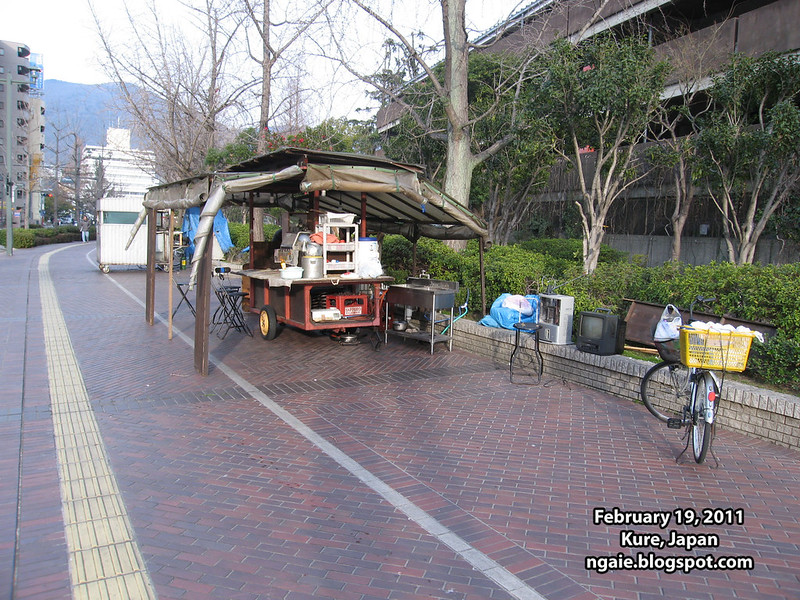
To me it seemed like Kure was a city in decline, like every other city in Japan centred around the activities of the armed forces. It was mid-day and there was hardly anyone walking around the streets in the city centre.
"Naval Coffee", I don't know why this would be famous?

The shopping arcade or shotengai of Kure. I think the presence of the "you me town" big-box chain store near the train station sucked the life out of the city.
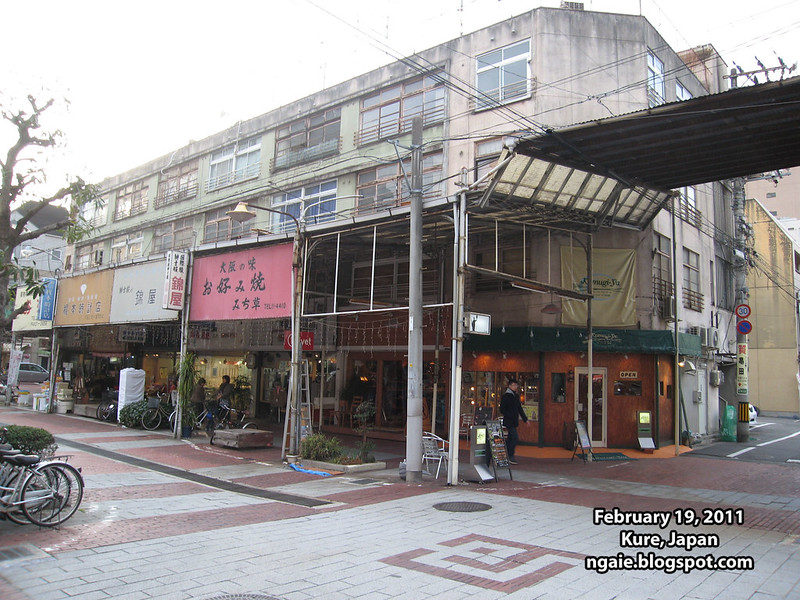
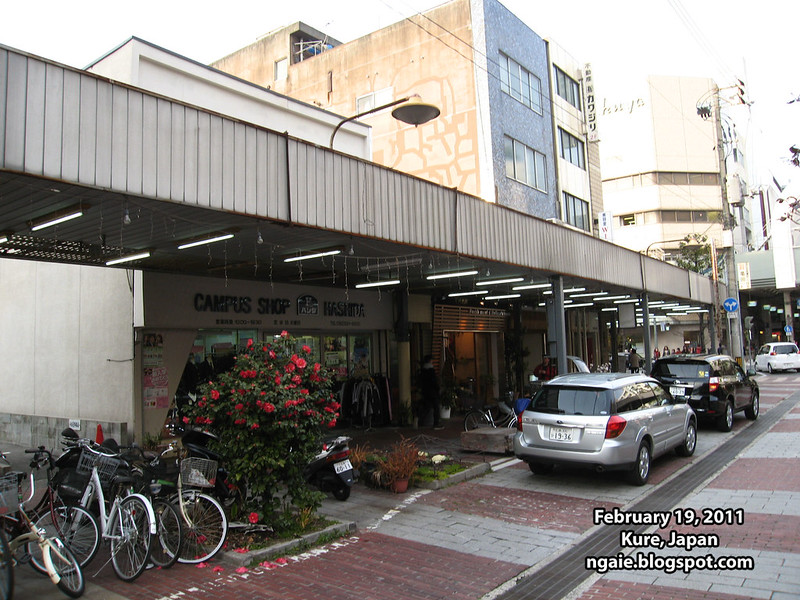
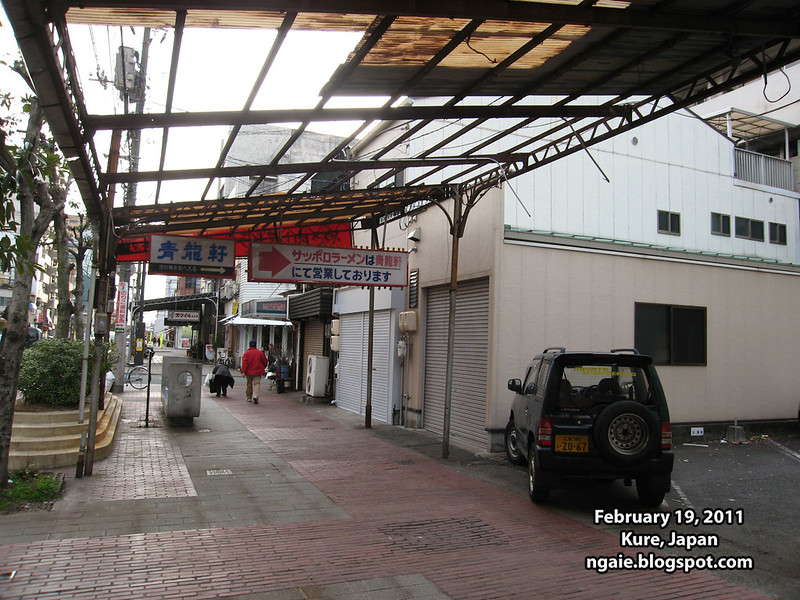
Even the gas station was shuttered.
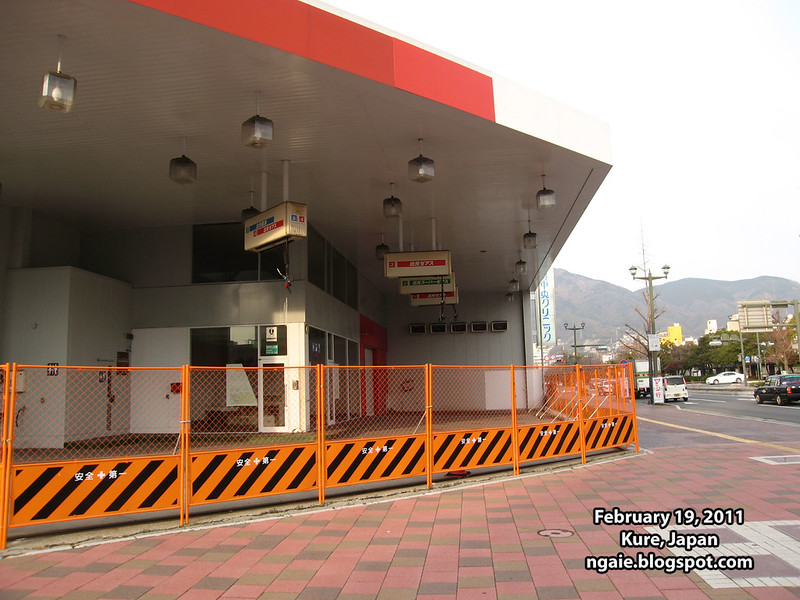
Overall, I didn't think that Kure was that interesting. Because Kure is located in an out of the way location, I wouldn't recommend anyone coming here unless you had a deep interest in the military history of Japan or you lived in the region and looking to do a day trip.

0 comments:
Post a Comment